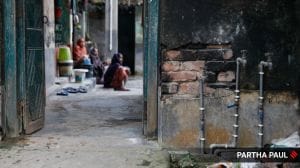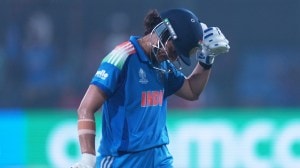Our Ronaldos die before they turn 5
In the din of soccermania, we let a slim but sensible document wallow in oblivion. That's inevitably the fate of anything that concerns t...

In the din of soccermania, we let a slim but sensible document wallow in oblivion. That’s inevitably the fate of anything that concerns the unheard majority, but now that People Like Us have discovered soccer, let me present the Unicef’s 1998 Progress of Nations reports with a question: Why does India rank 115th in world soccer? Or for that matter, why does India rank nowhere in world sport? The answers are there in the document that took me less than an hour to read.
One figure was particularly revealing. It said 53 percent of children under five are under-weight in India. In other words, more than half of our children begin life at a disadvantage, provided they are not claimed by preventable infectious diseases, like 2.7 million potential Ronaldos each year, before their fifth birthday. In Brazil, by no means an affluent nation, the equivalent figures are 6 percent and 148,000. I won’t mention the French figures, for that would be comparing chalk with cheese, but let’s check out the numbers for Croatia,the new soccer superpower barely out of the shadow of war. Just 1 percent of Croatian children under five, reports Unicef, are under-weight and their under-five mortality rate is 11 per 1,000, compared to our 111 per 1,000. Is it any surprise then that Brazil has lifted the World Cup four times in this century? Or that Croatia, a nation of 4.5 million, already has a Davor Suker?
It doesn’t take a genius to figure out why. The Unicef document has more damning figures. It says 38 percent of our teenaged girls are currently married (of whom 14 percent don’t have access to contraception), and for every 1,000 girls in the 15-19 age bracket, 109 give birth to a child each year. Of course, we can take pride in the fact that we are marginally better off than Bangladesh, and significantly ahead of Mali, Niger, Uganda, Bur-kina Faso, Cameroon and the Central African Republic. We can at least enter our 51st year secure in the knowledge that our quality of life indicators are better-looking than those of nationsuniversally regarded as basket cases.
But that is not the only point. It is too well-known an argument, still it merits repetition. Girls who become mothers in their growing years are denied their full growth, so they are not physiologically equipped to produce healthy, normal-weight children. And how can their under-weight children grow up to become healthy adults and bear normal-weight children? These were the issues raised by none other than the Government of India in its finely-written 1992 National Nutrition Policy, yet this vicious cycle seems to have acquired karmic invincibility. And sadly, the quality of life of our children figures nowhere in our national discourse. Maybe soccermania will restore the balance. Because we must realise we are way behind Brazil.
And the really bad news is still to be scripted. We are living in a lucky world where new-generation vaccines have the power to save the lives of up to 8 million children each year by the early years of the new millennium. That’s good, butare these life-savers reaching those who need them badly? The catch is that they are too expensive to be accessible to the unheard majority. Each time, for instance, our son is administered a shot to protect him against Haemophilus influenzae Type B, a leading cause of pneumonia and meningitis among little children, we are poorer by Rs 600. Each of the three recommended shots against hepatitis-B costs us Rs 300. And I don’t even know how much we pay for our son’s insurance against rotavirus, the diarrhoea-inducing microbe blamed for the deaths of almost a million children worldwide every year.
Sometimes I wonder whether our driver can afford these vaccines for his daughter, who’s as old as our son. I don’t dare to ask for I have a fragile conscience and weaker will, but Unicef’s figures tell me that even conventional immunisation is not progressing the way it should. Virtually every country maintains data on child immunisation, the most common record being the notation a health centre makes each time achild is immunised. But in India, it seems, these `routine reports’ are prone to inaccuracies, which casts a shadow of doubt on the government’s immunisation record. Results of a 1992 survey, for instance, show that 10 million fewer children under 1 had received the third dose of the vaccine against diphtheria, pertussis and tetanus (DPT) than had been indicated in routine clinic reports. Obviously, the discrepancy can be explained by the common happening of vaccines (and medicines, too) finding their way into the market from health centres. It is not surprising, therefore, to read in the report that India ranks among the 20 countries that account for 85 percent of the 722,000 measles deaths among children under 5 each year. India’s contribution to this figure is 230,000, little less than that of the entire continent of Africa.
If our health-care delivery system cannot provide conventional immunisation to all our children, how can it be expected to protect the unheard majority from hepatitis-B, orHaemophilus influenzae Type B, or rotavirus? The government owes it to our children to introduce these three vaccines into immunisation programme and not make them a privilege accessible only to People Like Us. Democratisation of health-care is the first step towards a better quality of life, which means plenty of raw material to build a soccer dream team that can take on the world’s best. Sick populations, on the other hand, only succeed in producing sick individuals, not Zidanes or Sukers.





- 01
- 02
- 03
- 04
- 05


























